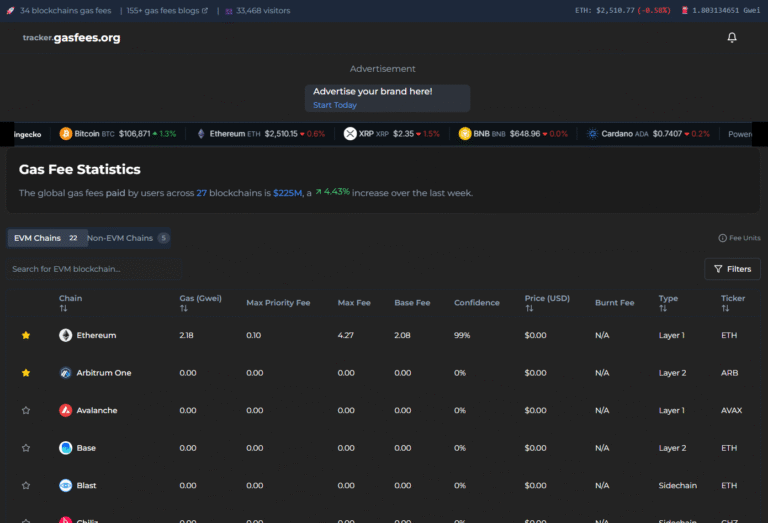What Are Moonbeam Gas Fees?
In the dynamic world of blockchain technology, Moonbeam stands out as a prominent player, offering Ethereum compatibility and unique features. However, effective navigation of Moonbeam requires a deep understanding of its gas fees. In this guide, we’ll unravel the intricacies of Moonbeam gas fees, exploring what they entail, how they work, and their significance in the Moonbeam blockchain ecosystem.
Understanding Moonbeam
Before we delve into Moonbeam gas fees, let’s grasp what Moonbeam represents in the broader blockchain landscape.
Moonbeam is a decentralized blockchain platform designed for interoperability between different blockchains, including Ethereum and Polkadot. It provides a developer-friendly environment for creating decentralized applications (DApps) with its Ethereum-compatible smart contract platform. Like other blockchains, Moonbeam uses gas fees to facilitate and secure transactions and smart contracts.
The Role of Gas Fees
Gas fees are essential in blockchain, representing the cost of operations on a blockchain network. Moonbeam, like other platforms, requires users to pay gas fees for actions such as sending transactions, deploying smart contracts, and using DApps.
Gas fees serve critical functions:
- Resource Compensation: Miners and validators receive compensation for providing computational resources like computing power, storage, and network bandwidth.
- Network Security: Gas fees deter malicious actors from flooding the network with spam transactions, preventing Denial-of-Service (DoS) attacks.
- Resource Allocation: Transactions with higher fees get priority, ensuring important transactions are processed promptly.
Moonbeam Gas Fees Details
While gas fees are a common concept, Moonbeam has its unique characteristics:
- Gas Price: Moonbeam’s gas fees, like Ethereum’s, use the gas price in Glimmer (GLMR), Moonbeam’s native token. Users set the gas price per unit of gas to control transaction speed.
- Gas Limit: Users can set a gas limit for transactions, capping the maximum gas expenditure to prevent unexpected costs.
Moonbeam introduces “Gas Token Staking,” allowing users to stake GLMR tokens for gas fee discounts, reducing overall transaction costs.
Factors Affecting Moonbeam Gas Fees
Gas fees on Moonbeam fluctuate due to various factors, including network activity levels. High demand can lead to increased gas fees as users compete for limited network resources.
Managing Moonbeam Gas Fees
To ensure cost-effective interactions on Moonbeam, users can:
Monitoring network activity and gas price trends helps time transactions effectively, potentially reducing gas fees during periods of lower demand.
Calculating Transaction Fees on Moonbeam
Now, let’s delve into calculating transaction fees for both Substrate and Ethereum transactions on Moonbeam.
Key Differences with Ethereum
Moonbeam’s fee model differs from Ethereum:
- Dynamic Fee Mechanism: Moonbeam’s dynamic fee mechanism resembles EIP-1559 but has its implementation.
- Gas Mapping: Moonbeam’s gas fees are mapped from the transaction’s Substrate extrinsic weight value, using a fixed factor of 25000, multiplied by the unit gas price.
- Additional Metrics: Moonbeam records proof size, impacting refunds and triggering “Out of Gas” errors when proof size limits are reached.
Overview of MBIP-5
MBIP-5 introduces changes to Moonbeam’s fee mechanism, addressing storage growth and implementing block storage limits.
Impacts of MBIP-5
MBIP-5 impacts various aspects of Moonbeam’s transaction fees:
- Block Storage Limits: Prevent unchecked storage growth in a single block.
- Gas-to-Storage Ratio: Determines gas required for storage based on the block’s gas limit and storage limit.
- Calculating Additional Gas: Used to calculate gas required for transactions that increase storage.
Ethereum API Transaction Fees
For Ethereum users, calculating transaction fees on Moonbeam via the Ethereum API involves specific fee models:
- GasPrice Calculation: GasPrice = BaseFee + MaxPriorityFeePerGas < MaxFeePerGas ? BaseFee + MaxPriorityFeePerGas : MaxFeePerGas; Transaction Fee = (GasPrice * TransactionWeight) / 25000
- Base Fee: A minimum fee set by the network, adjusting based on block congestion.
Sample Code for Calculating Transaction Fees
Developers can use sample code to calculate transaction fees programmatically on Moonbeam.
Conclusion
In conclusion, Moonbeam gas fees are crucial for efficient transactions and network security. Understanding how these fees work empowers developers and users to navigate Moonbeam effectively while optimizing costs. As Moonbeam evolves, staying informed about its latest developments is essential for a seamless blockchain experience.
Moonbeam’s gas fee approach and Ethereum compatibility open up possibilities for decentralized applications and blockchain interoperability. Deep understanding of gas fees will help you make informed decisions and maximize the benefits of this promising blockchain platform.
More Resources about Moonbeam
Moonbeam Foundation: https://moonbeam.foundation/
Moobeam Whitepaper: https://docs.moonbeam.network/
Moonbeam Network X: https://twitter.com/moonbeamnetwork
Moonbeam Telegram: https://t.me/Moonbeam_Official
Polkadot on X: https://twitter.com/Polkadot



